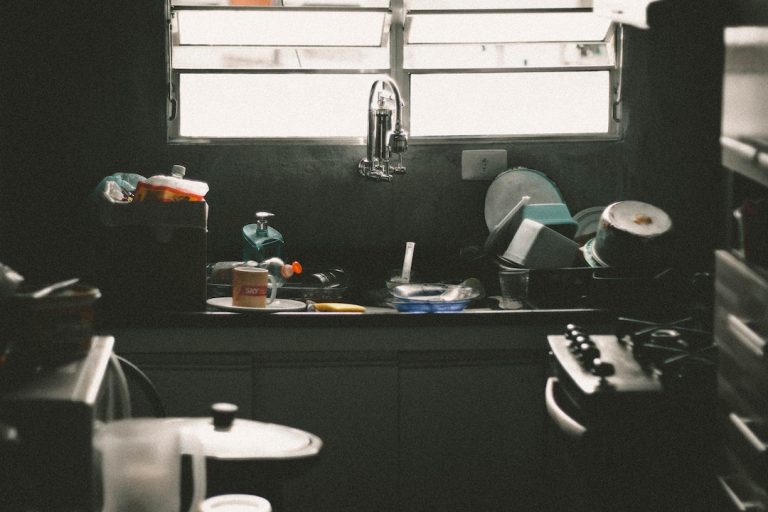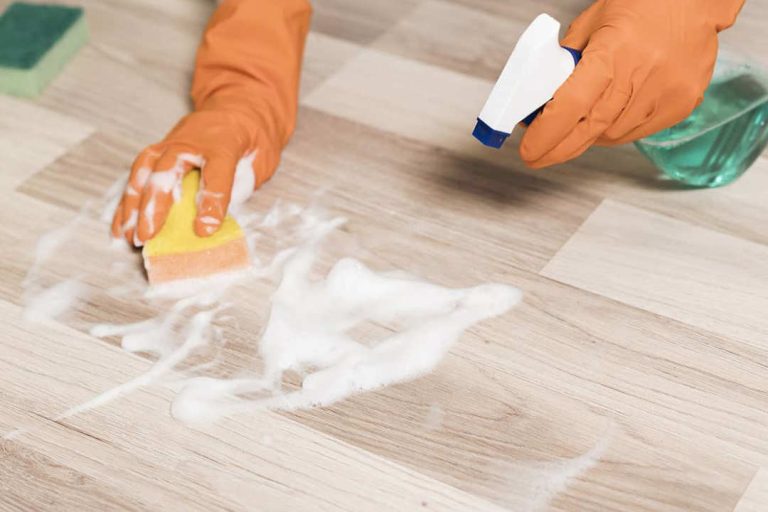If you spend a lot of time in your kitchen, you know how easy it is for kitchen cabinets to become dirty and greasy. Proper cleaning is essential to keep your cabinets looking new and extend their lifespan. However, cleaning kitchen cabinets may seem like a daunting task, especially if you’re not sure where to start. In this section, we will provide you with a step-by-step plan for how to properly clean kitchen cabinets.
We will begin by outlining the necessary supplies you need to gather, including cleaning supplies, tools, and materials. We will then guide you through the process of removing items from your cabinets and dusting them. This is followed by selecting the appropriate cleaning solution. We will also cover proper cleaning techniques for both the exterior and interior surfaces of your cabinets. Additionally, we will provide you with specific guidelines on cleaning cabinet handles and hardware. Finally, we will answer some frequently asked questions about cleaning kitchen cabinets.
By following our step-by-step plan, you can have your kitchen cabinets looking shiny and new in no time!
Gather the Necessary Supplies
Before starting the cleaning process, it’s important to gather all the necessary supplies. Here’s a list of what you’ll need:
- Clean microfiber cloths or sponge
- Bucket
- Dish soap or commercial cleaner
- Vinegar or baking soda (optional)
- Rubber gloves
- Stool or ladder (if needed)
Make sure to have all the materials ready before beginning to clean for maximum efficiency.
Remove Items and Dust Cabinets
Prior to cleaning the cabinets, it is important to remove all items from the inside and outside of the cabinets. This will allow for easier cleaning and ensure that no cleaning solution or dust residue is left on items.
After removing all items, use a dry microfiber cloth or a vacuum attachment to remove any loose dust or debris from the cabinets. Ensure that all dust and debris are removed from crevices and corners in and around the cabinets.
Tip: If using a vacuum attachment, use a soft brush attachment to avoid scratching the cabinet surface.
Once all dust and debris have been removed, the cabinets are now ready for cleaning.
Choose the Right Cleaning Solution
Choosing the right cleaning solution is an essential part of properly cleaning kitchen cabinets. There are several options available that you can use, including homemade cleaners or commercially available products.
Homemade Cleaners: Homemade cleaners are effective in cleaning kitchen cabinets and are also a safer option compared to commercial cleaners. You can make a cleaning solution using vinegar and water, baking soda and water, or dish soap and water. These cleaning solutions are perfect for removing stubborn stains and grease from your kitchen cabinets.
Commercial Cleaners: Commercial cleaners are readily available in stores, and many of them are specifically designed for cleaning kitchen cabinets. When choosing a commercial cleaner, always check the label to ensure it is safe for your cabinet’s material. Avoid using abrasive cleaners that can scratch or damage the cabinet surface.
Before using any cleaning solution, it’s essential to test it on a small, inconspicuous area of your cabinets to ensure it doesn’t cause any damage.
Clean the Exterior and Interior Surfaces
Now that you have gathered all the necessary supplies and removed the items from your cabinets, it’s time to start cleaning the exterior and interior surfaces. The following steps will help you achieve a spotless and shiny finish:
Clean the Exterior Surfaces
Begin by wiping down the exterior surfaces of the cabinets with a microfiber cloth or a soft sponge. If there are any stains or spills that are difficult to remove, you can use a mixture of warm water and dish soap. Be sure to rinse off the cleaning solution with a damp cloth and dry the cabinets completely with a clean towel.
If you have wooden cabinets, make sure you avoid using harsh chemicals or abrasive cleaners that can damage the finish. Instead, use a gentle cleaner that is designed for wood surfaces.
Clean the Interior Surfaces
Next, turn your attention to the interior surfaces of the cabinets. Begin by wiping the shelves and drawers with a clean, damp cloth to remove any dust, dirt, or food particles.
If there are any stains or spills inside the cabinets, you can use a mixture of warm water and vinegar to clean them off. For tough stains or stuck-on food, you can use baking soda mixed with water. Be sure to rinse off the cleaning solution with a damp cloth and dry the cabinets completely before putting the items back in.
Remember to use different cleaning techniques depending on the material of your cabinets. For laminate surfaces, avoid using abrasive sponges that can scratch the surface, and instead use a soft cloth. For glass surfaces, use a glass cleaner to avoid leaving streaks.
By following these steps, your kitchen cabinets will be clean, fresh, and ready for use!
Pay Attention to Handles and Hardware
When cleaning kitchen cabinets, it is important not to overlook the handles and hardware. Over time, grease and grime can build up in these areas, making them sticky and difficult to clean. Here are some tips for cleaning cabinet handles and hardware effectively:
- Remove handles and hardware: If possible, remove the handles and hardware before cleaning them. This will make it much easier to clean all the nooks and crannies and ensure a thorough cleaning.
- Use warm soapy water: Fill a bucket with warm water and add a few drops of dish soap. Dip a sponge or microfiber cloth in the soapy water and use it to clean the handles and hardware. Be sure to scrub all surfaces to remove any built-up grime.
- Try a vinegar solution: If the handles and hardware are particularly dirty, you may need a stronger cleaner. Mix equal parts water and white vinegar in a spray bottle and spray the solution on the handles and hardware. Let it sit for a few minutes, then use a sponge or cloth to wipe away the grime.
- Don’t forget the screws: If you’ve removed the handles and hardware, don’t forget to clean the screws as well. Use a toothbrush or small brush to scrub away any dirt or grime from the screw heads.
- Dry thoroughly: After cleaning the handles and hardware, be sure to dry them thoroughly with a clean cloth. This will prevent any water spots or streaks from forming.
Frequently Asked Questions about Cleaning Kitchen Cabinets
Cleaning kitchen cabinets can be a daunting task for many homeowners. To help you with your cleaning process, we have put together a list of frequently asked questions about cleaning kitchen cabinets.
How often should I clean my kitchen cabinets?
It is recommended to clean your kitchen cabinets at least once every three months to prevent the build-up of dirt and grime.
Can I use vinegar to clean my kitchen cabinets?
Yes, you can use vinegar to clean your kitchen cabinets. Mix equal parts of vinegar and water, and use a soft cloth to wipe down the cabinets.
Is it safe to use commercial cleaners on my kitchen cabinets?
Yes, it is safe to use commercial cleaners on your kitchen cabinets, but make sure to read the label and follow the instructions carefully. Some cleaners can be harsh and may damage the cabinet surface.
How do I remove grease from my kitchen cabinets?
To remove grease from your kitchen cabinets, use a mixture of warm water and dish soap. Apply the solution to the affected area and let it sit for a few minutes. Then, use a soft cloth to wipe away the grease.
Can I clean the inside of my cabinets with the same cleaning solution as the outside?
Yes, you can use the same cleaning solution for the inside and outside of your kitchen cabinets. However, make sure to test the solution on a small, inconspicuous area first to ensure it does not damage the surface.
How can I maintain the cleanliness of my kitchen cabinets?
To maintain the cleanliness of your kitchen cabinets, wipe them down regularly with a soft cloth and mild cleaning solution. Avoid using harsh chemicals or abrasive materials that can scratch or damage the surface.
- How to Clean Kitchen Floor Grout Naturally: Easy DIY Methods - June 25, 2024
- How to Clean Thermoplastic Kitchen Cabinets Properly: Expert Tips - June 19, 2024
- How to Clean Mica Kitchen Cabinets: A Simple Guide - June 19, 2024






